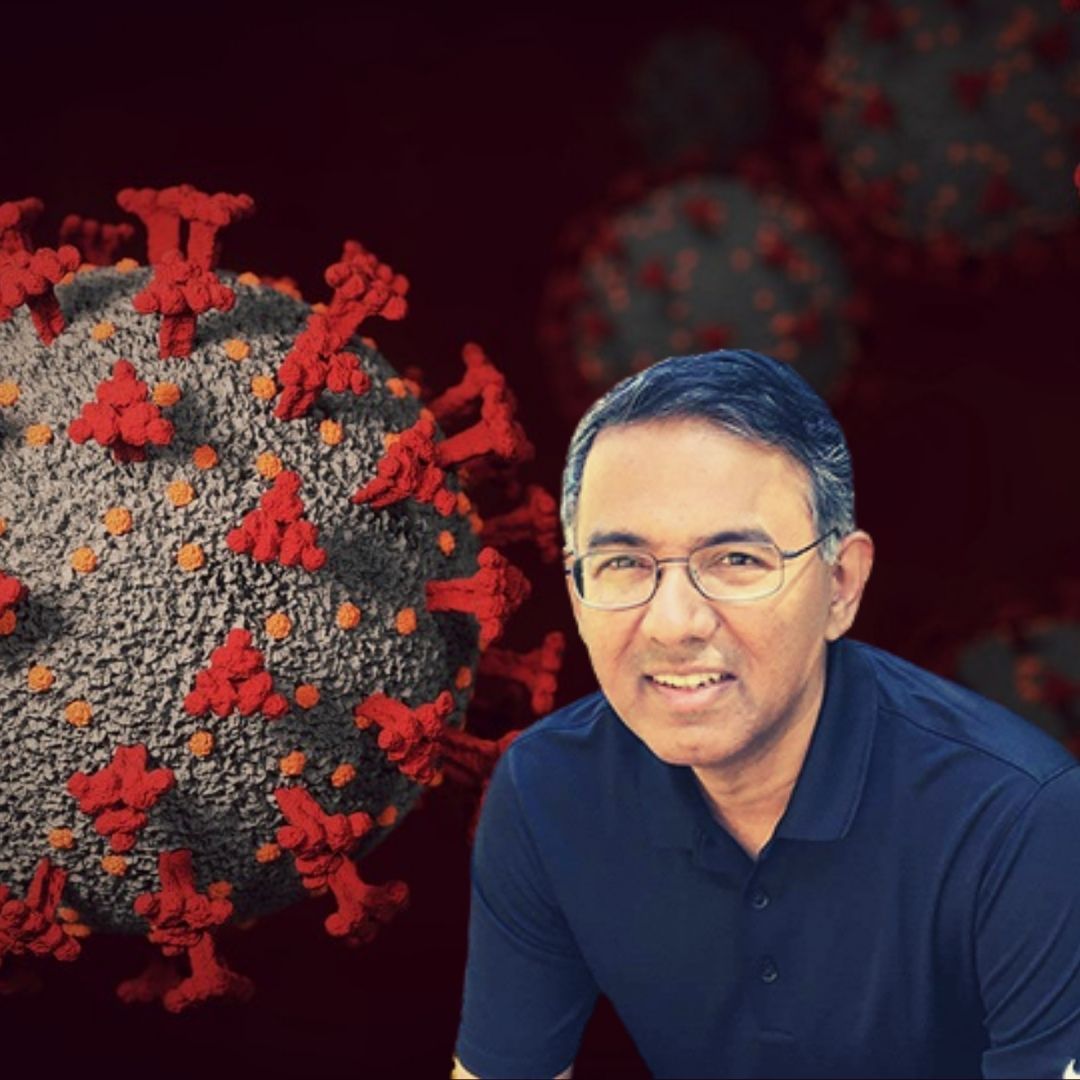
Image Credits: Pixabay, The University of British Columbia
Indian-Origin Scientist Among UBC Researchers Conducts World's 1st Molecular-Level Analysis Of Omicron
Writer: Tashafi Nazir
For most people, journalism sounds hectic and chaotic. For her, it's a passion she has been chasing for years. With an extensive media background, Tashafi believes in putting efforts on presenting a simple incident in the most interesting way.
India, 24 Jan 2022 11:57 AM GMT
Editor : Shiva Chaudhary |
A post-graduate in Journalism and Mass Communication with relevant skills, specialising in content editing & writing. I believe in the precise dissemination of information based on facts to the public.
Creatives : Tashafi Nazir
For most people, journalism sounds hectic and chaotic. For her, it's a passion she has been chasing for years. With an extensive media background, Tashafi believes in putting efforts on presenting a simple incident in the most interesting way.
Dr Sriram Subramaniam, professor in the UBC faculty of medicine's department of biochemistry and molecular biology, said that Omicron has greater binding affinity than the original SARS-CoV-2 virus, with levels more comparable than the Delta variant.
An Indian-origin scientist has been a part of a team of researchers at the prestigious University of British Columbia, which has conducted the world's first molecular-level structural analysis of the Omicron spike protein, which could help accelerate the development of more effective treatments against the variant. Spike protein helps the virus enter and infect human cells.
Dr Sriram Subramaniam, professor in the UBC faculty of medicine's department of biochemistry and molecular biology, said that Omicron has greater binding affinity than the original SARS-CoV-2 virus, with levels more comparable than the Delta variant.
Published in the Science journal, the findings shed new light on why Omicron is more transmissible and will help accelerate the development of more effective treatments.
According to a statement issued by the Vancouver-based university, the analysis reveals how the heavily mutated variant infects human cells and is highly evasive of immunity. Dr Subramaniam discussed the implications of his team's research and underlined that "vaccination remains our best defence against the Omicron variant", NDTV reported.
The findings, done at near-atomic resolution using a cryo-electron microscope, show substantial antibody evasion and binding with human cells that contribute to more transmissibility and that inoculation remains the best defence, the university stated.
"UBC researchers are the first in the world to conduct a molecular-level structural analysis of the Omicron variant spike protein," it stated.
Three To Five Times More Mutations
The Omicron variant is unprecedented for having 37 spike protein mutations, that's three to five times more mutations than any other variant we've seen," Dr Subramaniam said.
It is vital for two reasons. Firstly, because the spike protein is how the virus attaches to and infects cells in the human body. Secondly, because antibodies bind to the spike protein to neutralise the virus, he added.
Therefore, small mutations on the spike protein have potentially enormous implications for how the virus is transmitted, how an individual's body fights it, and the effectiveness of treatments.
"Our study used cryo-electron microscopy and other tests to understand how mutations impact the behaviour of the Omicron variant at a molecular level," Dr Subramaniam expressed.
He said that several mutations like R493, S496 and R498 create new salt bridges and hydrogen bonds between the spike protein and the human cell receptor known as ACE2.
This appears to grow binding affinity, how strongly the virus attaches to cells, while other mutations (K417N) decrease the strength of this bond, the scientist said, adding that it is remarkable that the Omicron variant evolved to retain its ability to bind with human cells efficiently despite such extensive mutations.
"Our experiments authenticate what we are seeing in the real world, that the Omicron spike protein is far better than other variants at evading monoclonal antibodies that are commonly used as treatments, as well as at evading the immunity produced by both vaccines and natural infection," he said.
Omicron Less Evasive Of Immunity By Vaccines
Notably, he said that Omicron was less evasive of the immunity created by vaccines than immunity stemming from natural infection in unvaccinated COVID-19 patients.
The doctor said that both the characteristics seen as a result of spike protein mutations, strong binding with human cells and increased antibody evasion, are likely contributing factors to the growing transmissibility of the Omicron variant.
These are the underlying mechanisms fuelling Omicron's rapid spread, and why it could become the dominant variant of SARS-CoV-2 very rapidly, he said.
"The positive news is that knowing the molecular structure of the spike protein will allow us to develop more effective treatments against the Omicron and related variants in the future. Understanding how the virus attaches to and infects human cells means developing treatments that disrupt that process and neutralise it.
"An essential focus for our team is to understand better the binding of neutralising antibodies and treatments that will be effective across the entire range of variants, and how those can be used to develop variant-resistant treatments," Subramaniam added.
In November 2021, Omicron was first identified in South Africa and Botswana and is now driving the current wave of infections.
Meanwhile, some top experts on Monday, January 24, said that the Omicron variant in India might see a sharp rise in the coming weeks. They noted that the variant was already in community transmission, and hospitals saw more patients despite declining cases in major cities. India so far has recorded more than 10,000 Omicron cases.
Also Read: Who Is Gay Soldier J Suresh And Why Defence Ministry Objected To Make Film On His Life?
 All section
All section














